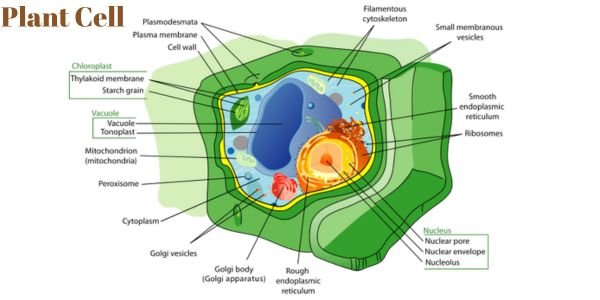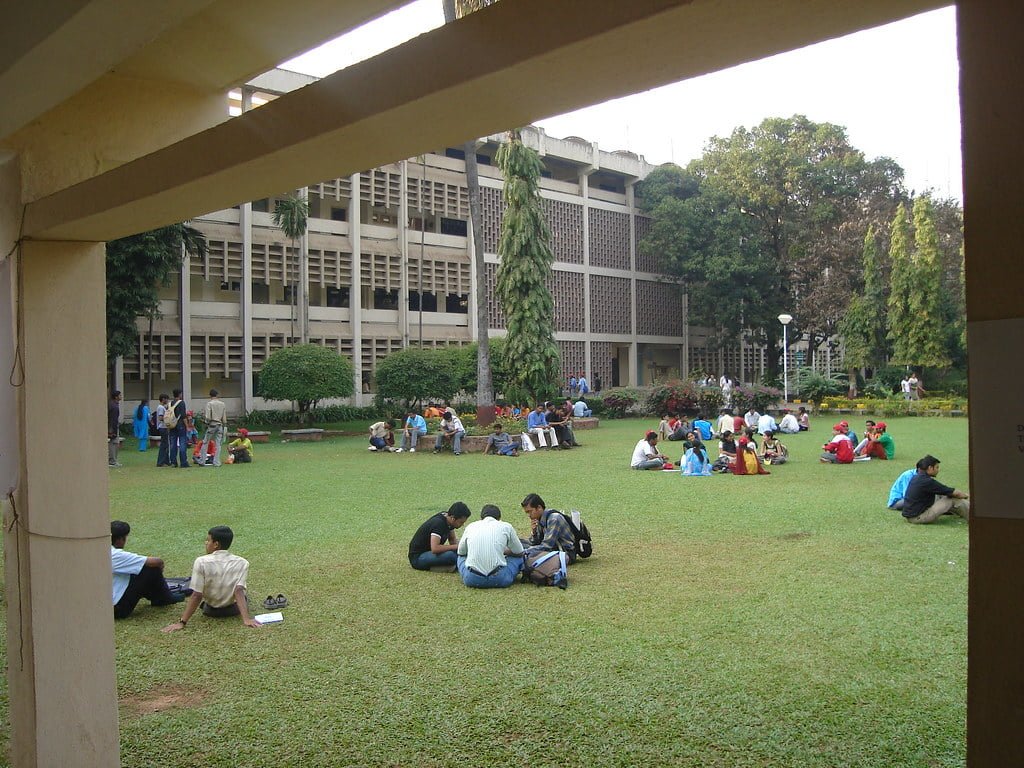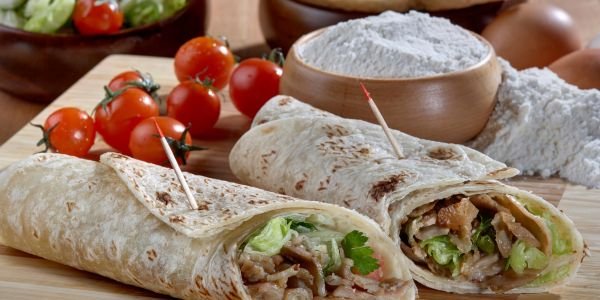Table of Contents
In the fascinating world of biology, the plant cell stands as one of nature’s most remarkable creations. Plant cells are the basic building blocks of plant life, possessing a unique structure and performing essential functions that enable plants to thrive.
What is a Plant Cell?
Plant cells are eukaryotic cells, meaning they possess a distinct nucleus enclosed within a membrane. These cells, similar to animal cells, are fundamental units of life, but they exhibit several distinctive features that set them apart.
The Plant Cell Diagram:

The plant cell diagram is a visual representation of the intricate structures and components that make up a plant cell. This diagram provides a comprehensive overview of the various organelles and their functions, giving us valuable insights into the inner workings of these remarkable cells.
The plant cell diagram serves as a blueprint, illustrating the different parts of a plant cell and their relationships. It helps us understand how plant cells function, communicate, and carry out their essential tasks. Let’s delve into the key components depicted in the plant cell diagram and their roles.
Cell Wall:
The cell wall is a rigid outer layer that provides structural support, protection, and shape to the plant cell. Composed primarily of cellulose, hemicellulose, and lignin, the cell wall acts as a barrier against mechanical stress and helps prevent excessive water uptake.
Plasma Membrane:
The plasma membrane, depicted as a thin boundary surrounding the cell, is a selectively permeable lipid bilayer. It regulates the movement of substances in and out of the cell, maintaining the cell’s internal environment and facilitating communication with neighboring cells.
Nucleus:
The nucleus, often depicted as a large oval structure within the plant cell, houses the cell’s genetic material. It contains DNA, which carries the instructions for protein synthesis and regulates cell activities. The nucleus is surrounded by a double membrane called the nuclear envelope, which controls the flow of molecules.
Cytoplasm:
The cytoplasm, shown as the space between the cell membrane and the nucleus, contains various organelles and structures. It consists of a gel-like substance called cytosol, which serves as a medium for cellular processes and supports the organelles.
Chloroplasts:
Chloroplasts are green-colored organelles responsible for photosynthesis, the process through which plants convert sunlight, water, and carbon dioxide into glucose and oxygen. They contain chlorophyll, the pigment that captures light energy and initiates the production of carbohydrates.
Mitochondria:
Mitochondria are energy-producing organelles often referred to as the “powerhouses” of the cell. They carry out cellular respiration, converting nutrients into ATP (adenosine triphosphate), the energy currency of the cell. Mitochondria play a crucial role in meeting the energy demands of plant cells.
Vacuoles:
Plant cells feature large, fluid-filled vacuoles depicted as membrane-bound sacs within the diagram. Vacuoles help maintain turgor pressure, regulate water balance, store nutrients, and house pigments or toxins. They contribute to cell expansion, growth, and storage functions.
Endoplasmic Reticulum (ER):
The endoplasmic reticulum is a complex network of membrane-bound tubes and sacs involved in protein synthesis, lipid metabolism, and detoxification. The rough endoplasmic reticulum (RER), depicted with ribosomes, synthesizes proteins, while the smooth endoplasmic reticulum (SER) is involved in lipid synthesis and detoxification processes.
Golgi Apparatus:
The Golgi apparatus, shown as a stack of flattened sacs, receives proteins and lipids synthesized in the ER. It modifies, sorts, and packages these molecules for transport to specific destinations within or outside the cell. The Golgi apparatus plays a crucial role in protein secretion and delivery.
Plant Cell Types:
Parenchyma Cells
Parenchyma cells are the most common and versatile type of plant cell. They have thin cell walls, large central vacuoles, and a dense cytoplasm. Parenchyma cells play crucial roles in photosynthesis, storage of nutrients, and wound healing. They also contribute to plant growth and are responsible for the synthesis and transport of organic molecules within the plant.
Collenchyma Cells
Collenchyma cells provide structural support to growing plant parts. They have thickened primary cell walls, often in specific regions, which impart flexibility and tensile strength. Collenchyma cells are elongated and found in regions undergoing active growth, such as the stems, petioles, and leaf veins. Their primary function is to support young and developing tissues while allowing for flexibility and bending.
Sclerenchyma Cells
Sclerenchyma cells are the principal cells responsible for providing mechanical support to plants. They have thick secondary cell walls that contain a high amount of lignin, making them rigid and non-expandable. Sclerenchyma cells are classified into two types: fibers and sclereids.
Fibers are long, slender cells found in tissues like vascular bundles, providing strength and support. Sclereids, on the other hand, are shorter, irregularly shaped cells that provide mechanical protection to various plant parts, such as seed coats or fruit shells.
Xylem Cells
Xylem cells are involved in the conduction of water, minerals, and dissolved substances from the roots to the rest of the plant. They are composed of several cell types, including tracheids and vessel elements. Tracheids are elongated cells with tapered ends and thick secondary walls. They allow water transport through pits present in their walls.
Vessel elements, found in angiosperms, are shorter and wider cells arranged end-to-end to form long conduits called vessels. Vessel elements provide efficient water transport due to their perforated end walls known as perforation plates.
Phloem Cells
Phloem cells are responsible for the transport of sugars, organic compounds, and other nutrients throughout the plant. They consist of sieve tube elements and companion cells. Sieve tube elements form long tubes with perforated sieve plates at their ends.
These sieve plates allow the movement of nutrients from cell to cell. Companion cells provide metabolic support to sieve tube elements, ensuring the efficient transport of sugars and other substances.
Epidermal Cells
Epidermal cells form the outermost layer of plant surfaces, such as leaves, stems, and roots. They have thin walls and are tightly packed to provide protection against water loss, pathogens, and mechanical damage.
Epidermal cells may also possess specialized structures like stomata, which regulate gas exchange, and trichomes, which serve various functions, including defense against herbivores and reducing water loss through transpiration.
Guard Cells
Guard cells are specialized epidermal cells that surround stomata, regulating their opening and closing. They have a kidney-shaped structure with a thicker inner wall and a thinner outer wall. The opening and closing of stomata by the guard cells allow for gas exchange and control of water loss through transpiration.
Defining Plant Cell Function:
Plant cell function refers to the specific activities and processes carried out by individual plant cells to ensure the proper functioning and survival of the plant as a whole. These functions are executed by various organelles within the cell and involve intricate biochemical and physiological processes.
1. Photosynthesis:
One of the primary functions of plant cells is photosynthesis. Through this process, plant cells capture sunlight, carbon dioxide, and water, and convert them into glucose (energy-rich molecules) and oxygen. Photosynthesis occurs in specialized organelles called chloroplasts, which contain chlorophyll, the pigment responsible for capturing light energy.
2. Respiration:
Plant cells also perform cellular respiration, a process that converts stored energy (in the form of glucose and other organic molecules) into ATP (adenosine triphosphate), the cell’s energy currency. Mitochondria, the powerhouses of the cell, play a vital role in this energy-generating process.
3. Nutrient Uptake and Storage:
Plant cells are responsible for absorbing and storing essential nutrients necessary for plant growth and development. Through the cell membrane, plant cells selectively absorb water, minerals, and other nutrients from the soil. These nutrients are then transported and stored in specialized organelles such as vacuoles.
4. Cell Growth and Expansion:
Plant cells undergo growth and expansion, leading to the growth of the entire plant. Cell division, cell elongation, and cell differentiation are critical processes involved in plant cell growth. Plant hormones, such as auxins, cytokinins, and gibberellins, regulate these processes.
5. Reproduction:
Plant cells are involved in plant reproduction, both through asexual and sexual means. Asexual reproduction occurs through processes like mitosis and the formation of plant organs such as roots, stems, and leaves. Sexual reproduction involves the fusion of male and female gametes to form seeds, which ultimately develop into new plants.
6. Defense Mechanisms:
Plant cells possess defense mechanisms to protect themselves against pathogens, herbivores, and environmental stressors. They produce chemical compounds, such as secondary metabolites and phytoalexins, to deter pests and pathogens. Plant cells also activate their defense responses, including the release of signaling molecules, upon sensing threats.
7. Signal Transduction and Communication:
Plant cells communicate and respond to various internal and external signals. They transmit signals through complex signaling pathways, involving receptors, hormones, and second messengers. This communication allows plants to respond to changes in their environment, such as light, temperature, and stress conditions.
8. Storage and Metabolism:
Plant cells store energy and nutrients in specialized structures like starch grains, lipid droplets, and protein bodies. These stored molecules provide a reserve for the plant during periods of limited resources. Additionally, plant cells carry out various metabolic processes, including the synthesis and breakdown of carbohydrates, lipids, and proteins.
Also, read General






























